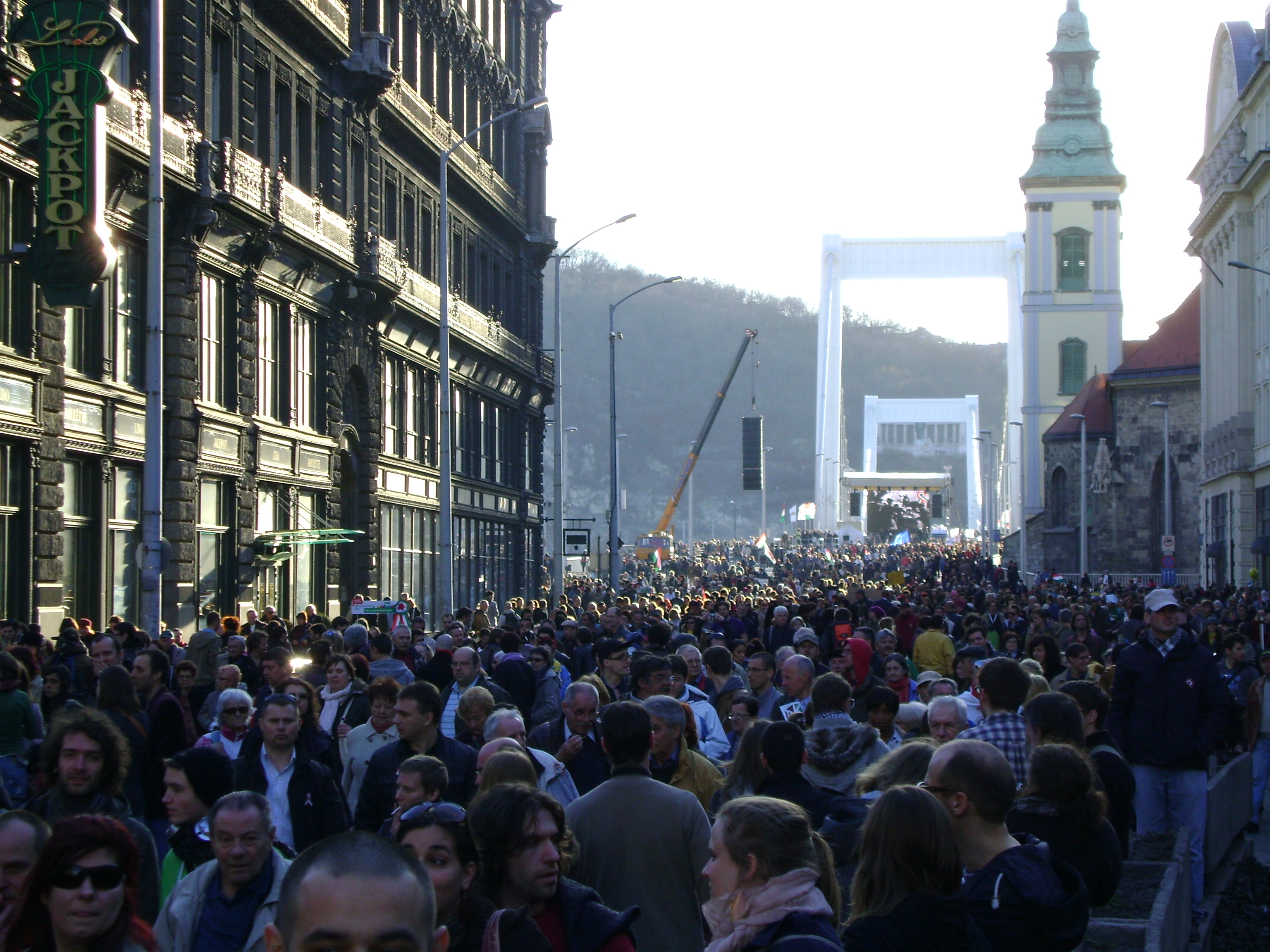
In April 2011, in a symbolic move, Budapest’s Republic Square was renamed after the late Pope John-Paul II. This was one of the many consequences of the electoral victory of the Fidesz Party and its Christian Democrat allies a year earlier. The winners immediately called it a ‘revolution at the voting booths’. With the support of 53 percent of voters, the alliance won 67 percent majority in parliament, and soon began to colonise the public sphere in an attempt to embed its Christian, nationalist and conservative values. By 2012, the new government has fundamentally reshaped Hungary’s media landscape.
Throughout the 2000s, Freedom House listed Hungary amongst other ‘free press’ countries, with scores meeting the regional average. Yet for 2011, Hungary was awarded 36 points, which listed it among the ‘partly free press’ countries. Moreover, new Hungarian media laws adopted in late 2010 have been widely criticised, including by the Media Freedom Representative of the Organisation for Security and Co-operation in Europe (OSCE), the International Press Institute, Reporters Without Borders, the UN Special Rapporteur on the Promotion and Protection of the Right to Freedom of Opinion and Expression and by major international newspapers. This post will briefly describe and assess the main features of Hungary’s new media landscape with a focus on media policy, media supervision, government communication and the ideological landscape.
Media policy
In contrast to the 1996 Broadcasting Act, which was based on extensive consultation and passed with 90 percent of votes in Parliament, including support from oppositional parties, the Orbán Government passed the 2010 Media Acts without consulting professional organisations or the opposition. As a result of the Acts, public service broadcasters dismissed journalists on a massive scale and hired Fidesz loyalists. The newly established Media Council granted licences to pro-government radio stations yet failed to renew oppositional Club Radio’s broadcasting rights. Such measures indicated a move away from a media policy based on the idea of consensus, as the new government came to consider media policy a zero-sum game in which conflict became the main rule. The Freedom House Nations in Transit 2011 report called this ‘an alarming concentration of political power over the media’.
Media supervision
Before 2010, all parliamentary parties could nominate members to the media authority and the boards of public broadcasters. However in 2010 the Orbán government created a Media Council headed by Annamária Szalai, a former member and MP of Fidesz and directly appointed by the Prime Minister. Indeed, all four members of the council were nominated by Fidesz. The director of the Media Fund, the body now in control of public broadcasters’ budgets and employing their journalists, was appointed by Szalai. Hungary’s media institutions now lacked internal checks and balances; in their current form, they cannot stand up to political pressure. Rather, they are ‘transmission belts’, that is, the very instruments of political pressure. The former period of multi-party control over the media, enabling parties to mutually limit each other’s opportunities to influence the media landscape, has given way to a new period of one-party control.
Government communication
Throughout the 1990s and 2000s, professional spin doctors began to introduce new methods of communication in Hungary, including agenda setting, news framing, image building and character assassination — all techniques of political marketing. But the Orbán government’s rule has marked a return to plain and simple political propaganda. In Hungarian Television’s major evening news bulletin, ‘Newsreel’, produced by the national news agency now headed by a former pro-Fidesz outlet’s chief editor, the coalition party representatives had their voices heard in 83 percent of all news items. The opposition parties had far less opportunity to comment on current affairs in late 2010. The major news bulletin ‘Midday Chronicle’ on Hungarian Radio, produced by this same news agency, also displayed a marked pro-government bias: 74 percent of news items covered either the government or Fidesz and the Christian Democrats, further marginalising the voice of the opposition parties.
Ideological landscape
Under previous governments the public sphere displayed a certain level of ideological pluralism, but the Orbán government has broken this rule and attempted to monopolise the truth. A first hint of this came with the so-called ‘Declaration of National Co-operation’. Adopted by parliamentary majority, this declaration must be posted up in all public administrative units and defines such joint national goals as ‘work, home, family, health and order’. Subsequent indicators include the preamble to the new constitution, with references to God, Christianity, the Holy Crown, as well as ‘faith, hope and love’. This comes along with related laws aiming at upholding the coalition’s values, including ‘public morals’ and the defence of children and the family. It also renamed some streets and squares, as I mentioned above. Republic Square is not the only space given a new moniker. The country itself has been renamed. Before 2010 it was officially referred to as the Republic of Hungary, but it is now Hungary, plain and simple. The Orbán Government has also introduced a new, unified, and highly controversial school curriculum, with some pre-war anti-Semitic writers’ works listed amongst the literature class readings. In short, the ruling cabinet has begun to establish ideological hegemony.
A spiral of silence
Despite widespread criticism, supporters of the incumbent Hungarian government argue that media freedom still exists in Hungary: after all, criticism of the Orbán cabinet can still be voiced in some newspapers, cable television channels and the internet. True, the Orbán government has not introduced downright censorship; it simply marginalises critical voices. Its strategy may not intend to silence dissenting voices altogether, but it may create what sociologists call a ‘spiral of silence’, where dissenters who think they are in a minority prefer not to give voice to their critical views in order to avoid sanctions. The price, including Hungary’s declining international prestige as indicated by reports from the various press freedom organisations and international newspapers, will be paid for not only by the government, but by the entire country.
Péter Bajomi-Lázár is the MDCEE Senior Research Fellow at St. Anthony’s College, Oxford.




No Comment